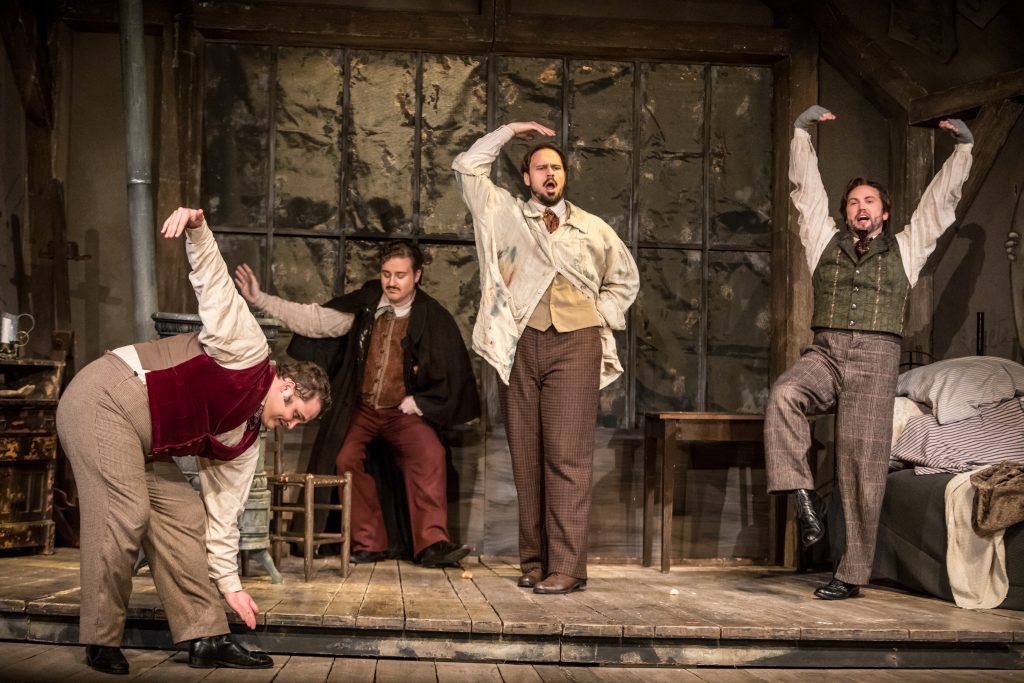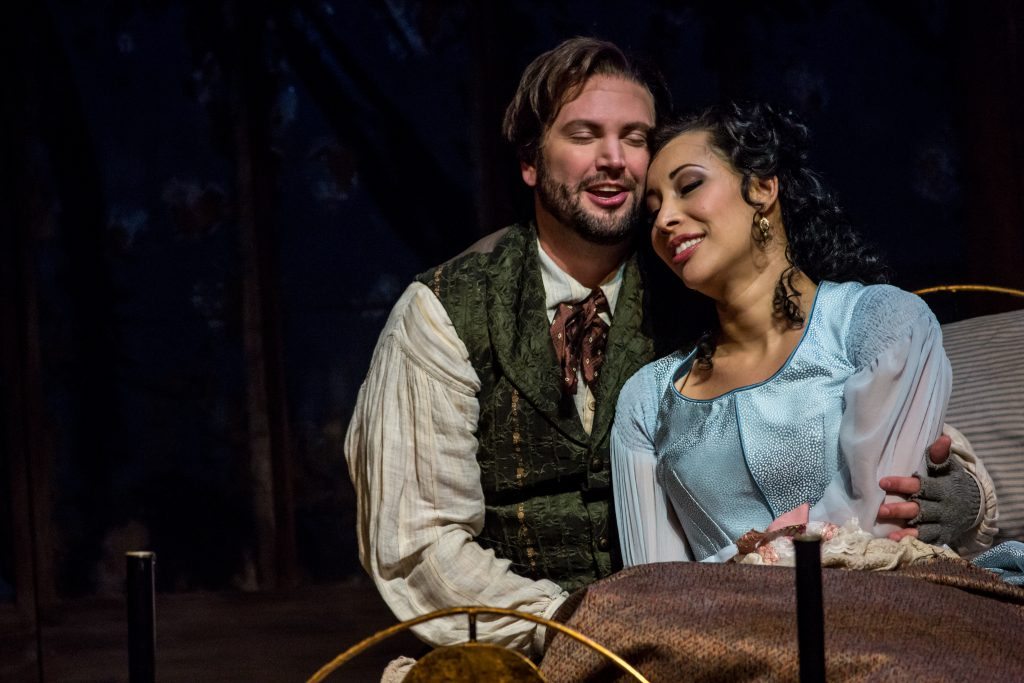I have been deeply pondering the subject of opera and relevancy recently given my eavesdropping on the Opera America conference (via Twitter) and thoughtfully listening to panels on relevancy, diversity, and inclusion in opera and classical music at the recent New Music Gathering. Time and again, Giacomo Puccini’s La Bohème comes up as one of those works almost maligned as “the same six operas getting programmed all over the country.” However, to hear Scott Quinn as Rodolfo sing, “Mimì’s a hothouse flower, blighted by poverty. To bring her back to life love’s not enough.” was to hear the opera with new and contemporary ears.
This Minnesota Opera production of Puccini’s La Bohème reminded me how to listen to an enduring work, even one set in the Latin Quarter of 19th-century Paris, with an ear and eye towards today. Much of the ability to perceive this work in a contemporary context stems from the excellent cast chemistry that was exhibited throughout the performance. The quartet of Edward Parks as Marcello, Scott Quinn as Rodolfo, Benjamin Sieverding as Colline, and Thomas Glass as Schaunard demonstrated this cohesiveness musically and dramatically from the moment they all are in the freezing garret together. It became even more lively and amiable with the addition of Ben Crickenberger as Benoit in the Act I. This liveliness from the first act was skillfully transposed to the tenderness and sentimentality they exuded in the final act with the addition of Mary Evelyn Hangley as Musetta to that tableau.

The cohesiveness of the cast was often demonstrated in the large ensemble numbers. The balance between the singers was quite special. Unfortunately, there were moments in which the orchestra outplayed the voices and one would have hoped for more nuance between their mezzo-forte and their fortissimo. While those few moments dampened the powerful effect of some of the larger moments for the singers, the orchestra, led by Michael Christie was much more supportive to the singers in the quietest extremes of their vocal line. One astounding example was the end of Act I while Nicole Cabell as Mimì exited the stage with Rodolfo singing, “Amor! Amor! Amor!” Cabell’s tone shimmered with a timbre matching the violins so elegantly that it was simply breathtaking. Cabell’s portrayal of Mimì was consistently musically breathtaking and dramatically heartbreaking. The Act III work between Cabell and Quinn deserves special mention here. Cabell’s performance of “Donde lieta usci” was so tender and bittersweet. Her production of the line, “Addio, senza rancor” when Mimì suggests to Rodolfo that she is leaving him and they can part without hard feelings was heart-stopping.

It is not always possible to experience these popular and esteemed works with contemporary ears and eyes but the Minnesota Opera production of La Bohème found a way to do it without trumpeting any individual one of the multiple puzzle pieces. Each one of the cast members performed at a very high calibre and contributed to the overall cast chemistry on stage. This production was not just another Bohème but rather what opera-goers are hungry for all over the country. What luck that we can find it in Minnesota season after season.
If you go
There are three performances of Minnesota Opera’s La Bohème left. Standing Room tickets are now available for Saturday, May 20 and Sunday, May 21 by phone only. Please visit mnopera.org/standing-room for more information.
